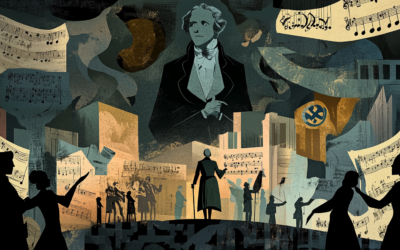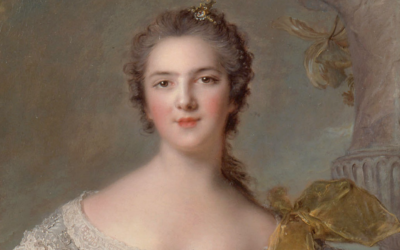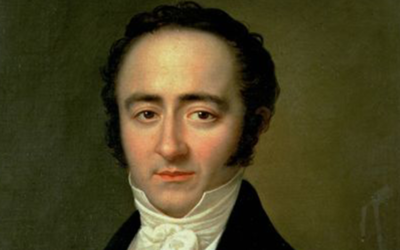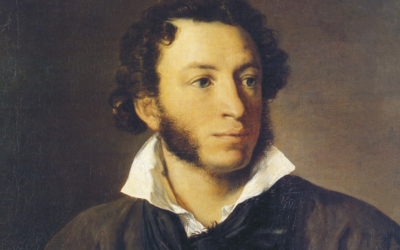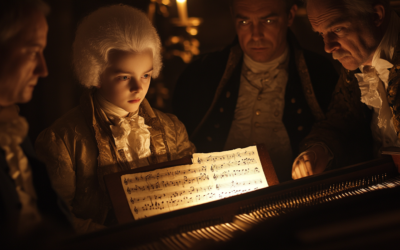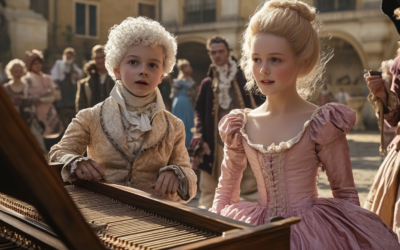The Myth of Mozart’s Sight-Reading Genius
A Closer Examination
In the 18th century, exaggerated accounts of Mozart’s abilities were as common as they were fantastical. Yet, detailed reports from figures like Daines Barrington and André Grétry reveal a far more human side of the prodigy, whose skills, impressive though they were, did not amount to the miraculous feats often attributed to him.
Mozart: The Fall of the Gods
This book offers a fresh and critical look at the life of Wolfgang Amadeus Mozart, challenging the myths that have surrounded him for centuries. We strip away the romanticised image of the “natural genius” and delve into the contradictions within Mozart’s extensive biographies. Backed by nearly 2,000 meticulously sourced citations, this work invites readers to explore a deeper, more complex understanding of Mozart. Perfect for those who wish to question the traditional narrative, this biography is a must-read for serious music lovers and historians.
"Even the most lauded prodigies sometimes hide a kernel of reality beneath layers of myth."
Mozart: The Fall of the Gods
Separating Fact from Fiction in 18th-Century Reports
In the concert posters promoting young Wolfgang Mozart, he was lauded as a prodigy capable of sight-reading even the most difficult pieces flawlessly. Such claims, often more fantastical than credible, warrant closer scrutiny. Two notable contemporary accounts diverge from the usual paternal praise or the laudatory articles seen in 18th-century newspapers. One is a scientific report from London, penned by Daines Barrington (1727–1800), a member of the Royal Society. The report, dating from June 1765, was finalized in 1769 and presented on February 15, 1770, a full five years after the original test.
Barrington was a multifaceted figure: a barrister, antiquarian, and naturalist with a penchant for ornithology and a fascination for musical prodigies. His book, a curious collection of studies ranging from the origins of turkeys to the melodiousness of birds, often employed flowery and exaggerated language. Perhaps Barrington’s fondness for child prodigies contributed to the surge in popularity of such marvels in England. He documented not only the Mozarts but also other youthful musicians like the Wesley brothers and William Crotch. Yet, his approach lacked scientific rigour, often relying on hearsay and questionable sources.
Barrington’s report on Mozart was no exception. In his experiment, he presented a manuscript duet, its composer unspecified, to test Mozart’s sight-reading skills. The piece was from Metastasio’s Demofoonte, arranged for two vocal parts and strings. Curiously, the vocal parts were written in the alto clef, which Barrington highlighted as if it were a major obstacle. Despite this build-up, Wolfgang executed the symphony introduction “masterfully,” as Barrington put it, then sang the upper vocal line while his father Leopold tackled the lower. Leopold faltered, eliciting disapproving looks from his son, who even corrected his mistakes. Barrington claimed that Wolfgang not only sang beautifully but also embellished the accompaniment with violin parts to enhance the musical effect.
A closer analysis reveals that the test was calibrated for both Mozarts, and Wolfgang, not surprisingly, outperformed his father. Stripping away the superlatives, we see that Wolfgang competently played the bass line with his left hand and added occasional violin parts with his right. Impressive for an eight-year-old, certainly, but not the miracle Barrington made it out to be. His comparison of the duet’s difficulty to reading ancient texts like Etruscan and Greek reveals his musical naivety. Instead of a supernatural feat, the performance was a well-practiced skill honed by Leopold to impress the general public.
Even more telling is a different account from André Ernest Modeste Grétry (1741–1813), a professional musician who tested Mozart in Geneva. When Leopold boasted of his son’s sight-reading prowess, Grétry composed a challenging sonata movement in B-flat major. Mozart played it, yet replaced several difficult passages with his own improvisations. The audience, except Grétry, was in awe. Grétry’s skepticism highlighted Wolfgang’s reliance on improvisation and lack of systematic study, a strategy that gave the illusion of mastery.
Mozart’s ability to read music, while exceptional for his age, fell short of true sight-reading as it’s defined today: a flawless, spontaneous execution of written music, requiring years of rigorous training and experience. Grétry’s observations dispel the myth of Mozart’s innate genius, pointing instead to his reliance on quick-thinking and a boldness typical of children.
You May Also Like
Mozart and the Nationalist Illusion: The 1931 Festival and Its Legacy
The Salzburg Festival, far from being a mere celebration of Mozart’s genius, was born out of nationalist ambitions during a turbulent period in Austro-German history. Conceived by figures like Max Reinhardt, Heinrich Damisch, and Friedrich Gehmacher, the festival was deeply rooted in ultranationalistic ideals, transforming Mozart’s legacy into a tool for cultural dominance. The truth behind its founding has long been obscured, but the primary sources tell a different, darker story.
K.6 and K.7 Sonatas: A Fabricated Genius?
The earliest sonatas of Wolfgang Amadeus Mozart, K.6 and K.7, are traditionally seen as proof of his precocious genius. But as we explore the murky origins of these works, we find that they may be more a product of Leopold Mozart’s ambition than Wolfgang’s musical talent. The truth, as always, lies somewhere between the notes.
Georg Nissen and the Missing Notebooks – Part II
This second part delves deeper into Georg Nissen’s scheme to expose the truth about Mozart’s death, and the roles of Constanze Mozart and her sons in keeping it buried. As new details emerge, the mystery surrounding the famous composer’s final days grows even darker, with powerful forces potentially at play.
Mozart and Salieri
Pushkin does not see Salieri as a mere mediocre. In fact, Salieri embodies the struggle of the artist, much like Michelangelo, who reaches greatness through relentless effort. Pushkin himself identifies with both Mozart and Salieri, but he emphasises that true art demands work, discipline, and sacrifice. In poisoning the Mozartian element within himself, Salieri performs a service to art, freeing it from the frivolity of effortless genius. ‘Can genius and malice coexist?’ Pushkin’s answer is complex, but in the end, Salieri’s act seems to affirm that true creation lies in the hands of those who strive.
The Fabrication of Genius
Leopold Mozart’s tireless efforts to promote his son Wolfgang as a child prodigy were rooted in manipulation, exaggeration, and a relentless drive for social success. Far from being a miraculous genius, Wolfgang was pushed into the spotlight by his father, whose grandiose claims often obscured the reality of his son’s abilities.
The Myth of Mozart
A critical examination of Wolfgang Amadeus Mozart’s life reveals a man shaped more by his father’s ambitions than by innate genius. Stripped of the myths, Mozart’s early years reflect a childhood dominated by relentless touring, inconsistent education, and a legacy built on exaggerated achievements. Discover the real story behind the legend.


